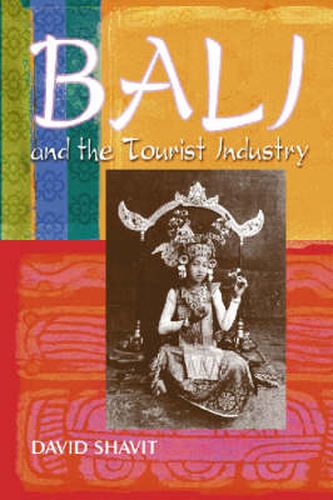Readings Newsletter
Become a Readings Member to make your shopping experience even easier.
Sign in or sign up for free!
You’re not far away from qualifying for FREE standard shipping within Australia
You’ve qualified for FREE standard shipping within Australia
The cart is loading…






This title is printed to order. This book may have been self-published. If so, we cannot guarantee the quality of the content. In the main most books will have gone through the editing process however some may not. We therefore suggest that you be aware of this before ordering this book. If in doubt check either the author or publisher’s details as we are unable to accept any returns unless they are faulty. Please contact us if you have any questions.
The island of Bali’s sensational image was created by the tourists, artists, and scholars who visited the tiny nation between the two world wars. A Dutch colony from 1908, Bali was a source of revenue for the Dutch government, which began to develop its image as the ultimate vacation spot. The tourism industry spread the idea of Bali as a paradise in which noble, happy, spiritual Balinese–all prodigiously creative artists–lived in innocence. Sensual images of beautiful people on an enchanted isle unspoiled by modernity predominated. Bali also acquired a reputation as a homosexual paradise. A host of books and articles fed these images of Bali until it evolved into one of the most romantic stops on the tourist itinerary. The Balinese people, however, made little profit from the tourist traffic. This history of the development of tourism in Bali stretches from the Dutch occupation in 1906 to the Japanese occupation in 1942. After exhaustive research in published records and in unpublished letters, diaries, and oral histories left by many of the American and European visitors to the island as well as the Balinese residents, the author explores the reasons for Bali’s popularity among Westerners and their effects on the native culture.
$9.00 standard shipping within Australia
FREE standard shipping within Australia for orders over $100.00
Express & International shipping calculated at checkout
This title is printed to order. This book may have been self-published. If so, we cannot guarantee the quality of the content. In the main most books will have gone through the editing process however some may not. We therefore suggest that you be aware of this before ordering this book. If in doubt check either the author or publisher’s details as we are unable to accept any returns unless they are faulty. Please contact us if you have any questions.
The island of Bali’s sensational image was created by the tourists, artists, and scholars who visited the tiny nation between the two world wars. A Dutch colony from 1908, Bali was a source of revenue for the Dutch government, which began to develop its image as the ultimate vacation spot. The tourism industry spread the idea of Bali as a paradise in which noble, happy, spiritual Balinese–all prodigiously creative artists–lived in innocence. Sensual images of beautiful people on an enchanted isle unspoiled by modernity predominated. Bali also acquired a reputation as a homosexual paradise. A host of books and articles fed these images of Bali until it evolved into one of the most romantic stops on the tourist itinerary. The Balinese people, however, made little profit from the tourist traffic. This history of the development of tourism in Bali stretches from the Dutch occupation in 1906 to the Japanese occupation in 1942. After exhaustive research in published records and in unpublished letters, diaries, and oral histories left by many of the American and European visitors to the island as well as the Balinese residents, the author explores the reasons for Bali’s popularity among Westerners and their effects on the native culture.